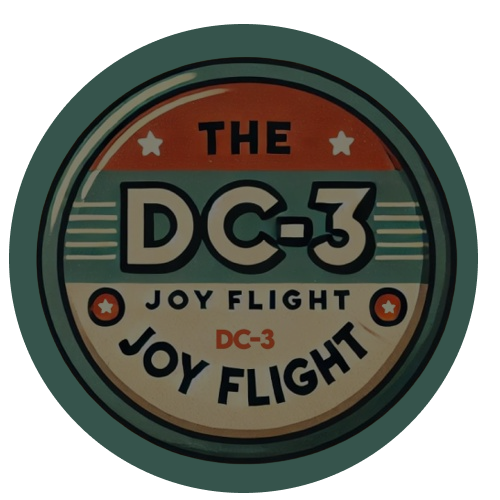HISTORY ‘THE PLANE THAT CHANGED THE WORLD’
The DC-3 first flew on December 17, 1935. This was just 32 years to the day since Orville Wright flew the world’s first aeroplane for the very first time, from the sand dunes of Kill Devil Hill, in North Carolina.
On that historic day, Mr Wright remained airborne for twelve seconds, and covered a distance of one hundred and twenty feet, just twenty five feet more than the wingspan of this aeroplane.
And yet, in thirty two short years, this machine had been developed, capable of carrying twenty-plus people a thousand miles, at nearly two hundred miles an hour.

It was a breathtaking technical achievement, and the DC-3 quickly became the standard airline aircraft of the western world.
Our aircraft was one of the last ones made, and rolled off the Douglas Aircraft Company’s Santa Monica production line in 1945.
It was delivered as a C-47 to the RAAF, and served that service faithfully, including in two wars, until it came to us in the late eighties.
As is common with military aircraft as opposed to civilian ones, they do very little flying, and this machine’s no exception, with the result that even now it’s only flown the equivalent of four years of normal airline service. It’s a very young old aeroplane.
It’s powered by two mighty Pratt and Whitney twin-row Wasp piston engines; each has fourteen cylinders, a capacity of 1830 cubic inches, and develops 1200 horsepower for takeoff.

Arguably the most sacred site in Australian Aviation, the RAAF base at Point Cook.
Point Cook is where much of the early flying was accomplished in Australia, more than one hundred years ago. For more than eighty years it was the RAAF’s main training base, and home of the RAAF College, where the service turned callow youths into officers and gentlemen.
It’s now the home of the RAAF Museum, a world class military history facility, specializing in our aviation heritage.
The Museum is unique in hosting an air display up to twice weekly!
Most Thursdays and Sundays, one of the Museum’s wonderful airworthy aircraft, ranging from a Tiger Moth to a Mustang, is displayed, with the pilot showing the visitors of the day what’s involved in preparing the aircraft for flight. He or she then conducts a flight display, and takes questions afterwards.
Great fun!










